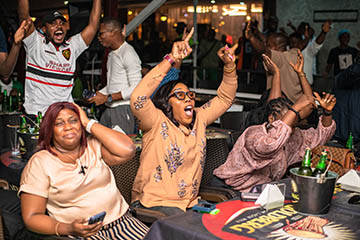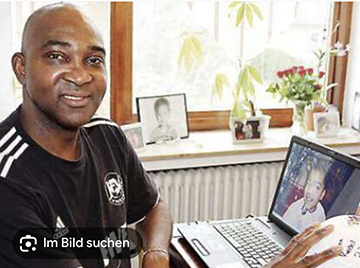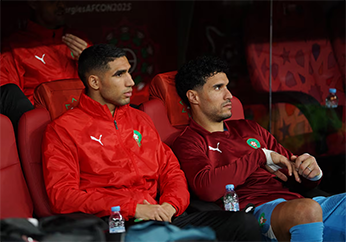AFCON
Gambia and Mali in top of the table clash at AFCON’s Group F

It is a big football irony that in a group where Tunisia, one of the powerhouses of African football are domiciled, The Gambia and Mali are the teams struggling to top the table.
The situation arose as favourites and seeded side, Tunisia lost their opening match to Mali while The Gambia who are debutants got the better part of Mauritania in their very first Africa Cup of Nations match last week, winning 1-0.
Today’s duel is The Gambia’s second Africa Cup of Nations match. After two identical 1-0 victories in the opening match day, Gambia and Mali enter the second round of Group F matches with high hopes of another win that could see them paving the way towards the next round in style.
Both Group F teams meet at the Limbe Stadium to decide which side, at least momentarily, takes the top spot. Time: 14:00 local time (13:00 GMT)
For The Gambia, it could be a continuation of a fairytale as they are still celebrating an opening win in their AFCON debut. Ablie Jallow strike gave the Scorpions a 1-0 win over Mauritania to start their first Africa Cup of Nations appearance on high skies.
Another positive result today will mean that Tom Saintfiet men are on their way not just for a historic debut but also for a fairytale second round appearance.
Their Belgian coach, Tom Saintfiet who handled Namibia against Nigeria in the race for Brazil 2014 World Cup is optimistic of a good result.
“We had a party to celebrate the country’s first victory. Now we are going to prepare the match against a big Malian team. We have 3 points, it’s already fantastic, but we have to continue. We will do everything to advance to the second round, and to give more light and promotion to The Gambia, the smallest country in Africa.”
So also is Gambia player, Omar Colley highly expectant. “Proud to be in this group, I play in Italy, but this is something else, it is indescribable to live what we are living. With the offensive armada that we have, we will seek points against Mali and Tunisia to bring joy to the Gambian people. Our goal is to win, match by match.”
Mali Eagles defeated Tunisia 1-0 in what was one of the opening match day surprises. Mohamed Magassouba men secured a famous victory over Carthage Eagles to boast their hopes of a historic AFCON campaign this year.
Another win over fellow West African side Gambia might see The Eagles through, but they have to beware the Scorpions’ sting this time.
Hear the coach’s timely warning: “We have started a construction phase and we are preparing for the future. Collective value is important to me, we aim to shine tomorrow against this ambitious Gambian.”, remarked Mali’s coach, Mohamed Magassouba.
Continuing, he remarked: “This generation can write its story, a happy story, I hope. Mali is on the quest for the supreme title. We are responsible for producing the show and winning, the rest does not concern us.”
His player, Diadie Samassekou a midfielder added his voice: “The morale of the team is at its highest, it’s very important to win your first game. we give everything with an irreproachable state of mind. We don’t play according to the opponent; we have a game philosophy. Our only objective is to do everything to win, our people deserve a consecration.”
AFCON
‘Our Beat, Our Gold’ Lights Up Lagos as Goldberg Celebrates Super Eagles’ AFCON Progress

‘Our Beat, Our Gold’ took centre stage on Saturday as Goldberg Lager Beer transformed Nigeria’s 3–2 victory over Tunisia into a shared fan experience, blending football, culture and the easy-going excitement of Detty December as the Super Eagles sealed qualification for the Round of 16 at the Africa Cup of Nations.
At the expansive Ilubirin Way in Lagos, fans gathered early, many with bottles and cans of ice-cold Goldberg in hand, settling into a relaxed, open-air viewing environment designed to bring the match-day atmosphere closer to the people. Large screens, music and branded spaces created a comfortable setting where supporters could watch the decisive Group C clash together.
As the final whistle confirmed Nigeria’s place in the knockout phase, cheers rippled through the crowd. Bottles were raised in celebration as fans toasted both the result and the team’s steady progress, capturing a mood of calm satisfaction and pride rather than frenzy.

Our Beat, Our Gold in the air with the fans celebrating one of the Super Eagles’ goals at the viewing pavilion provided by Goldberg.
The evening drew a blend of celebrities and culture figures who mingled seamlessly with supporters. Actor Kunle Remi, actress Shaffy Bello and DJ DJ Kay Wise were among those present, enjoying the match alongside fans and contributing to a sense of shared occasion rather than spectacle.
Entertainment was thoughtfully woven into the programme. The Awajo dance group delivered energetic performances during breaks in play, while MC Advantage guided the flow of the evening, keeping the audience engaged without drawing attention away from the football.
Fans moved easily between watching the match, socialising and enjoying chilled Goldberg beers.
Former Super Eagles striker and AFCON winner Brown Ideye also attended, briefly interacting with supporters who welcomed the chance to connect with a familiar face from Nigeria’s football history.
Food and drinks flowed steadily throughout the venue, complemented by light games and predict-and-win activities that rewarded fans with branded gifts, keeping the atmosphere lively without overwhelming the match itself.
“Our Beat, Our Gold is about recognising how Nigerians experience football together,” said Kunle Aroyehun, Senior Brand Manager, Goldberg.
“It’s not always about noise or spectacle. Sometimes it’s about creating the right space for people to connect, share emotions and enjoy the game the way they naturally do — with good company and an ice-cold Goldberg.”
Aroyehun noted that the brand’s approach reflects the natural rhythm of Nigerian football culture. “Whether the Super Eagles are winning or preparing for the next challenge, the fans remain central. Their presence, their conversations and their belief are what give meaning to the game.”
Goldberg’s involvement in Nigerian football is underpinned by its long-standing partnership with the Nigeria Football Federation, one of the longest unbroken corporate sponsorships in the federation’s stable following the deal signed by Nigerian Breweries Plc on February 1, 2018. Since then, the brand has consistently mobilised fans to rally behind the national team, driving a surge in Super Eagles followership.
Fans at Ilubirin Way described the experience as balanced and welcoming. “It was well organised,” said Adesayo Bankonle, an attendee. “You could watch the match, talk football and enjoy a cold Goldberg without feeling rushed or crowded.”
Beyond Ilubirin, Goldberg said it is igniting AFCON excitement across multiple viewing centres in Lagos and beyond, ensuring fans in different communities can enjoy the tournament together. Even with Nigeria already through to the Round of 16, anticipation remains high ahead of the December 30 clash against Uganda.
“As AFCON continues, Goldberg will keep football, culture and community connected,” the brand said — celebrating the shared rhythm that defines Our Beat, Our Gold, one match and one ice-cold bottle at a time.
Join the Sports Village Square channel on WhatsApp: https://whatsapp.com/channel/0029Vaz7mEIGk1FxU8YIXb0H
AFCON
AFCON 2025: Andrew Uwe Warns Super Eagles Against Complacency Ahead of Uganda Clash

Former Nigeria international Andrew Uwe has cautioned the Super Eagles against lowering their guard when they face Uganda on Tuesday in what could be a decisive, table-topping Group C encounter at the Africa Cup of Nations 2025.
Nigeria have already sealed qualification for the Round of 16, but needs at least a point from the final group match to guarantee top spot. Uwe warned that a defeat could see the Super Eagles drop to second place should Tunisia defeat Tanzania, with the North Africans likely to move ahead on goal difference.
Speaking to Sports Village Square from his base in Germany, Uwe stressed the importance of focus and discipline against an Ugandan side still chasing qualification.
“I am delighted to see the team regaining their esteem and confidence,” Uwe said. “But this is not the time to relax. Matches like this are dangerous because the pressure is different. Uganda have everything to fight for, while Nigeria must still protect their position at the top of the group.”
Uwe, a former central defender, is fondly remembered for captaining Nigeria’s Flying Eagles to their first-ever podium finish at the FIFA U-20 World Cup, where they claimed third place at the 1985 edition in the Soviet Union after a fierce battle with the host nation.
He believes the Super Eagles must approach the Uganda match with the same intensity that earned them qualification, noting that finishing top of the group could provide a psychological and tactical advantage heading into the knockout phase.
“Tournament football rewards consistency,” he added. “If the Super Eagles maintain their focus and hunger, they can carry this momentum deep into the competition.”
Join the Sports Village Square channel on WhatsApp: https://whatsapp.com/channel/0029Vaz7mEIGk1FxU8YIXb0H
AFCON
Hakimi could finally make 2025 Africa Cup of Nations bow against Zambia

Morocco coach Walid Regragui has confirmed captain Achraf Hakimi is fit to face Zambia in their final Group A clash at the Africa Cup of Nations on Monday after two false starts in the competition so far.
Hakimi was crowned Africa’s best player at the Confederation of African Football awards last month but appeared at the ceremony in Rabat on crutches, sparking doubt over whether he would recover in time for the finals.
The Paris Saint-Germain right-back said he felt ready to play on the eve of the tournament, but has not been used in host Morocco’s opening two games, a 2-0 victory over Comoros and a 1-1 draw against Mali.
However, Regragui said on Sunday that the player is now available and thanked PSG for aiding the player’s recovery and releasing him early to link up with the national team and work with their medical staff.
“I want to thank Paris Saint-Germain. If Hakimi is back with us today, it’s thanks to them,” Regragui said.
“There’s not a single club in the world that would release a player 15 days before the start of the Africa Cup of Nations.
Morocco need victory over Zambia to ensure they win Group B, having last lifted the Cup of Nations trophy in 1976.
-Reuters
Join the Sports Village Square channel on WhatsApp: https://whatsapp.com/channel/0029Vaz7mEIGk1FxU8YIXb0H
-

 AFCON1 week ago
AFCON1 week agoAFCON 2025: Davido to Light Up Rabat as Morocco Sets Musical Tone for Africa
-

 AFCON1 week ago
AFCON1 week agoBREAKING! Like the World Cup and Olympic Games, AFCON to Become Quadrennial From 2028
-

 AFCON4 days ago
AFCON4 days agoHow Technology Helped Morocco Beat the Rains at AFCON 2025
-

 AFCON7 days ago
AFCON7 days agoOur Beat, Our Gold’ – Goldberg Rallies Nationwide Support for Super Eagles At AFCON 2025
-

 FIFA RANKING7 days ago
FIFA RANKING7 days agoFIFA Rankings: Spain Stay Top as Morocco Close in on Historic Top-10 Place
-

 AFCON1 day ago
AFCON1 day agoNigerian-descent Ikpeazu rescues Uganda, sets up must-win clash with Super Eagles
-

 AFCON20 hours ago
AFCON20 hours agoNigeria on the Brink of Historic 150th AFCON Goal
-

 AFCON3 days ago
AFCON3 days agoAngola and Zimbabwe make history in first-ever AFCON Boxing Day clash




